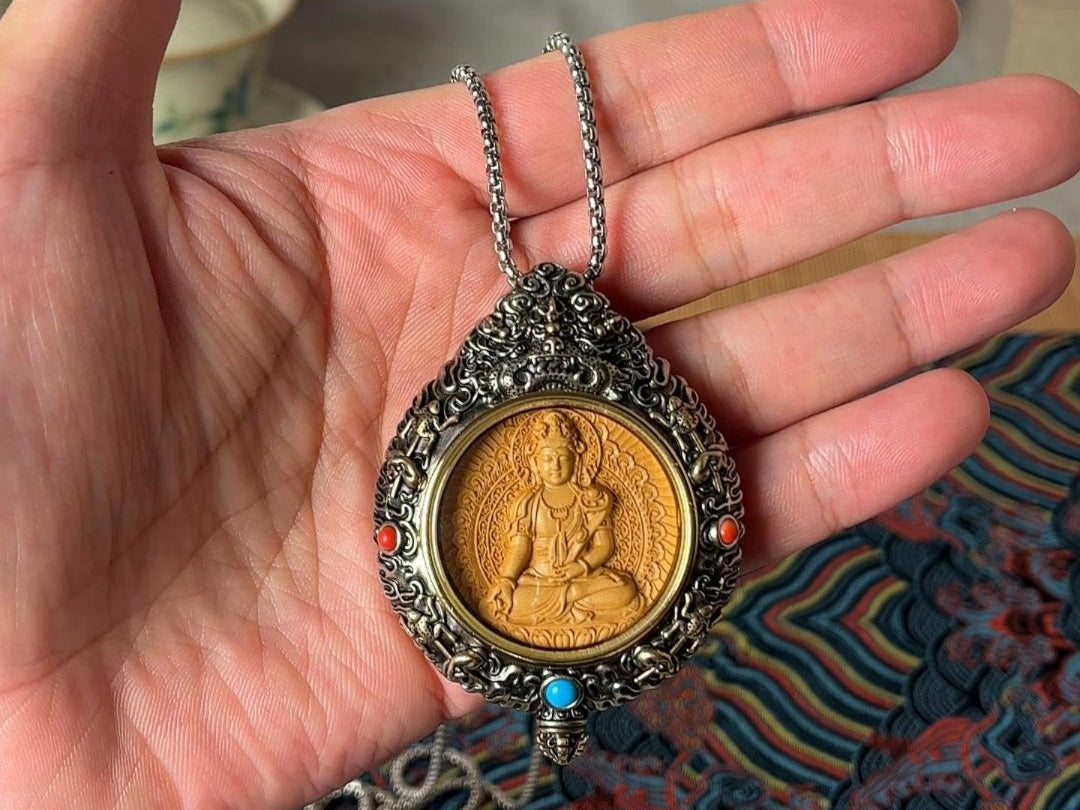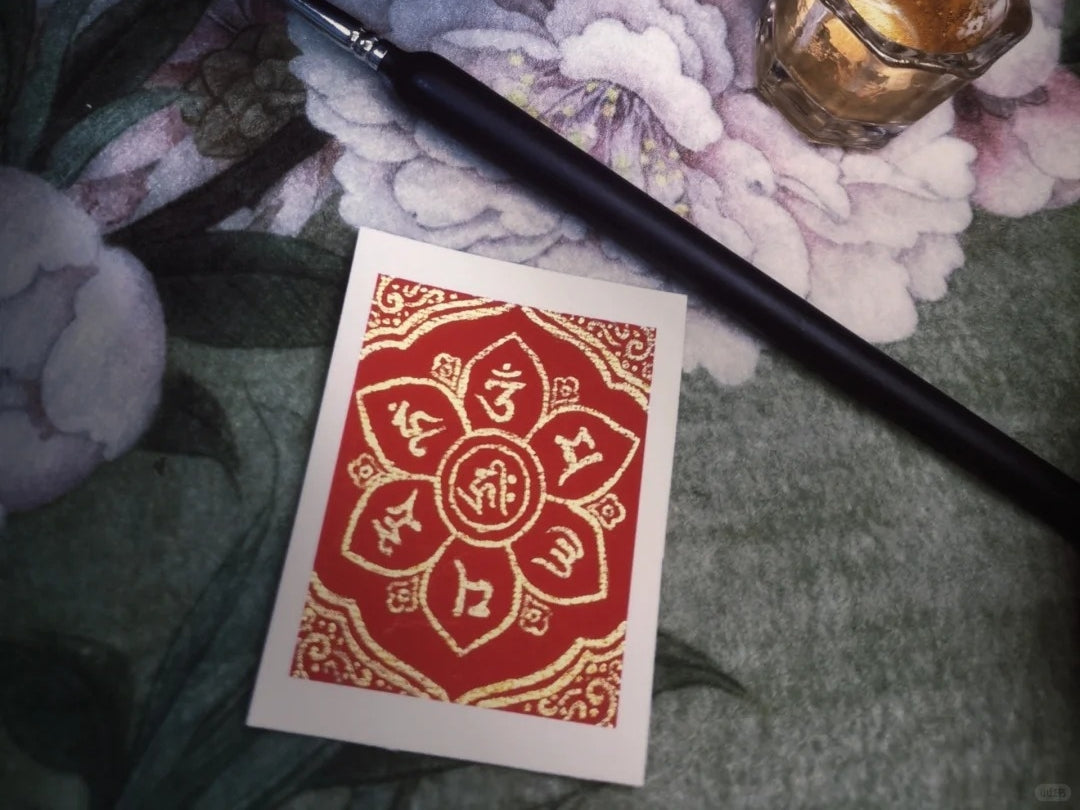Facing a big exam or presentation often feels like a test of attention as much as knowledge. Across Buddhist traditions, many people turn to specific guardian Buddhas and bodhisattvas to cultivate the mental qualities that help learning: clarity, calm, retention, and confident speech. Two figures commonly chosen for study-related support are Manjushri (wisdom and clear thinking) and Ākāśagarbha / Akasagarbha (memory and capacity to learn). This practical guide matches these guardians to real study goals, suggests short mantras and wearable forms (pendants, rings, malas), and offers quick pre-exam rituals you can use in minutes.

Who helps with what?
-
Manjushri — The Bodhisattva of Wisdom.
When you need conceptual clarity, better analysis, or more fluent expression, Manjushri is the traditional choice. He’s often shown holding a flaming sword (to cut through confusion) and a scripture (representing lucid understanding). If your challenge is comprehension or verbal exams, Manjushri’s qualities are a useful focus.
-
Ākāśagarbha — The Bodhisattva of Vast Memory.
Ākāśagarbha is associated with spaciousness of mind and the power to remember and absorb teachings. Students seeking better retention, smoother recall under pressure, or more effective study stamina often invoke Akasagarbha in practice.
Both figures are devotional supports — tools that help shape attention and set intention. They’re best used alongside concrete study habits (active recall, spaced repetition, practice tests), not as substitutes.
Short mantras and simple uses
Mantras are short phrases used to steady attention. Pronunciations and transliterations vary by lineage and region; below are accessible forms you can use as mindful anchors.
-
Manjushri (short mantra):
Om A Ra Pa Ca Na Dhīḥ
Use it aloud or silently. Even three slow repetitions can bring focus before starting a study block. -
Akasagarbha (simple form):
Common, shorter invocations include variations like Om Akasagarbhaya Namah or longer traditional forms in some lineages. Start with five to nine repetitions to ground your mind.
Practice guidance: Keep a small printed card with the mantra on your desk. Before you begin, take three breaths, read or recite the mantra once, and set a clear intention for the session (for example: “I will understand Chapter 4” or “I will remember the key formulas”).
Three quick pre-exam rituals (under five minutes)
Pick one to use before an exam, interview, or any high-pressure study situation.
-
Three-breath centering + mantra (2–3 minutes)
Sit upright. Inhale for four, exhale for four. Repeat the chosen mantra five times slowly. Touch your pendant or mala once at the end and dedicate the effort: “May this work benefit my learning and others.” -
Pocket charm check (30–60 seconds)
Hold a small pendant or ring in your palm, breathe three times, whisper the mantra once, and slip the charm back on. This transfers steady intention into a tactile cue. -
Light & glimpse (3 minutes)
If you keep a tiny shrine or gawu (portable shrine), light a candle or imagine a flame, look at the guardian image for 30 seconds, recite the mantra three times, then close with a one-sentence dedication.
These brief practices are not ritual theater — they’re simple attention resets that help you enter a focused state.
Wearable forms that help with study
Choosing the right object matters because the act of touching or seeing it becomes a habit cue.
-
Study Buddha pendant: A small Manjushri or Akasagarbha pendant worn near the heart is unobtrusive and easy to integrate into campus life or office settings. Metals like brass, bronze, or sterling silver are durable and respectful for devotional forms.
-
Ring: An engraved band with a seed syllable or short mantra is discreet and tactile — useful for quick grounding during breaks.
-
Bracelet / 27-bead mala: A quarter-mala (27 beads) is compact and permits short recitations without a full 108-count practice.
-
Materials & stones: Lapis or blue stones are traditionally linked to clarity; clear quartz is prized for focus. Choose what personally resonates; a meaningful object is more effective than a “correct” one.
Respectful use and simple etiquette
-
Treat devotional objects with care: remove them before bathing and avoid placing consecrated items on the floor.
-
If an item has been blessed, acknowledge that provenance and follow any handling notes.
-
Pair practice with effort: mantras and amulets support study, but they work best when combined with deliberate study methods.
Selecting a guardian Buddha for study is most useful when framed as a practice: a short, repeatable ritual that cues the mental state you want to cultivate—clarity for understanding, steadiness for recall. Whether you choose Manjushri for sharp thinking or Akasagarbha for better memory, let the image and the mantra be reminders to show up for the work. Small, consistent practices—three breaths, a short recitation, a calm touch—often make the biggest difference on test day.






